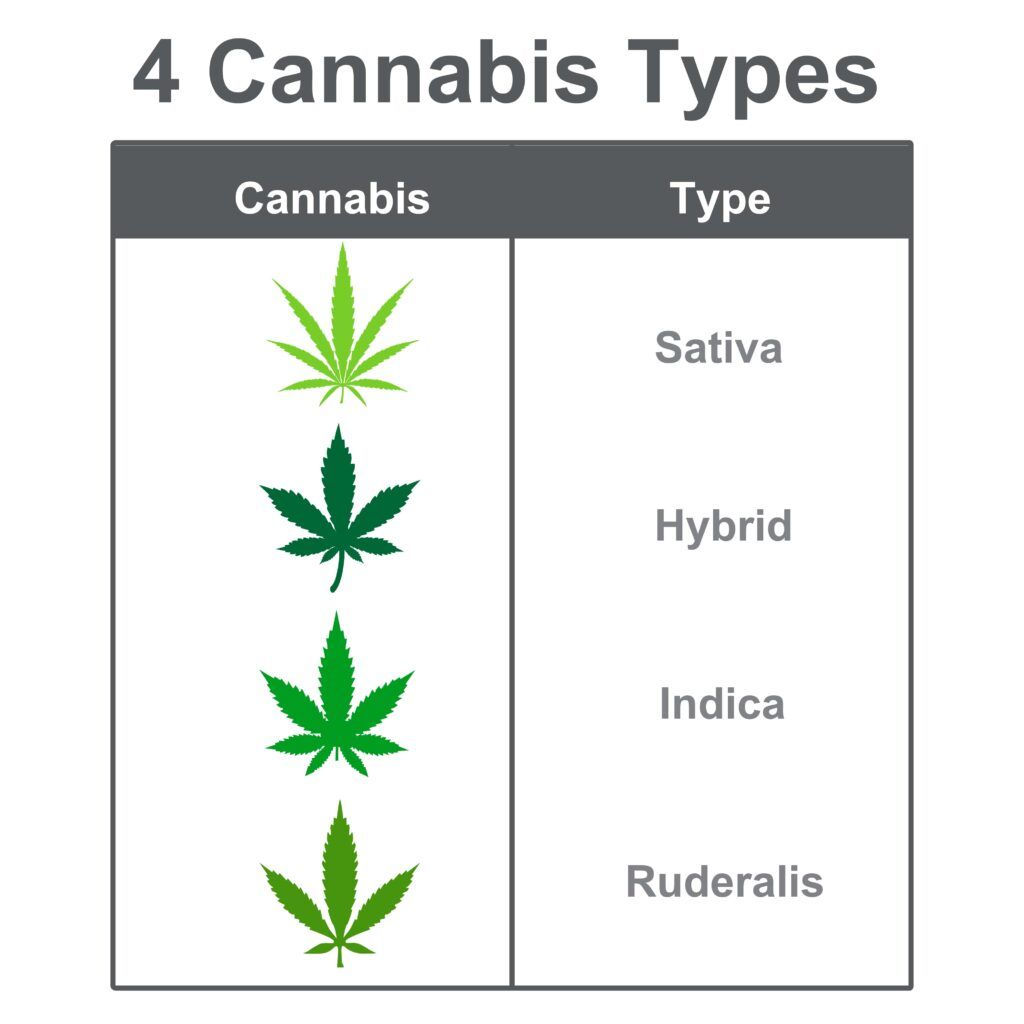The use of medical cannabis has gained significant attention in recent years as a potential treatment for various health conditions. Among them, neurological disorders have emerged as a field where medical cannabis shows promise. As we delve into the world of medical cannabis, it’s essential to understand how different strains and varieties can impact the treatment of neurological conditions.
Understanding Medical Cannabis and Marijuana Strains
Before we discuss the potential benefits of medical cannabis for neurological conditions, let’s briefly understand what medical cannabis is. Medical cannabis refers to the use of cannabis or its components, such as cannabinoids like THC (tetrahydrocannabinol) and CBD (cannabidiol), for therapeutic purposes. Cannabis contains more than a hundred different cannabinoids, each with distinct effects on the human body.
A marijuana strain refers to a specific variety or type of cannabis plant that has been selectively bred to emphasize certain characteristics, such as appearance, aroma, flavor, and cannabinoid content. Cannabis strains can differ in their levels of cannabinoids, primarily THC (tetrahydrocannabinol) and CBD (cannabidiol), as well as other minor cannabinoids and terpenes.
Each strain has a unique combination of these compounds, which gives it distinct effects and medicinal properties. Some strains are known for their relaxing and calming effects, while others are more energizing and uplifting. The varying cannabinoid and terpene profiles are responsible for these different effects.
Over time, cannabis breeders and growers have cultivated numerous strains with specific attributes, tailoring them to cater to different preferences and therapeutic needs. Some strains have become famous for their specific effects or unique characteristics, and they often have catchy names like “Blue Dream,” “OG Kush,” “Sour Diesel,” and many more.
It’s essential to note that while cannabis strains can have distinct effects, individual responses to a particular strain may vary based on factors such as a person’s tolerance, body chemistry, and the method of consumption. Additionally, the legal status of cannabis and its strains can vary significantly depending on the country or region, so it’s essential to be aware of local laws and regulations.
Cannabis Types vs. Strains: What’s the Difference?
The terms “cannabis types” and “strains” are often used interchangeably, but they refer to different aspects of the cannabis plant. Here’s a breakdown of the key differences between the two:
Cannabis Types:
Cannabis types refer to the broad categories or subspecies of the cannabis plant. There are three primary cannabis types based on their characteristics:

- Cannabis Sativa: Sativa strains are known for their tall and slender appearance, with narrow leaves. They tend to grow taller and have longer flowering cycles. Sativa strains are often associated with uplifting, energizing, and cerebral effects, making them popular for daytime use.
- Cannabis Indica: Indica strains have a shorter and bushier appearance, with broader leaves. They typically have a faster flowering cycle and are more suitable for indoor cultivation. Indica strains are often known for their relaxing, sedative, and body-calming effects, making them popular for evening or nighttime use.
- Cannabis Ruderalis: Ruderalis is less common and considered a subspecies of cannabis with unique characteristics. It is known for its autoflowering trait, meaning it starts flowering based on age rather than light cycles. Ruderalis strains are low in THC and not commonly used for recreational or medicinal purposes.
- Cannabis Hybrid: Hybrids are grown from both sativa and indica plants. They are grown for their unique effects. Oftentimes, hybrids are grown to increase THC percentage, but this can vary depending on the intended use. Depending on the THC-CBD ratio, hybrids can be classified as indica-dominant, sativa-dominant, or balanced.
Cannabis Strains:
Strains, on the other hand, refer to specific varieties or cultivars within a cannabis type. Each strain has its unique combination of cannabinoid and terpene profiles, which determine its effects, aroma, and flavor. Strains are created through selective breeding, wherein cannabis breeders cross different parent plants with desirable traits to create offspring with specific characteristics.
For example, within the Cannabis Indica type, there might be strains like “Purple Kush,” “Northern Lights,” or “Granddaddy Purple,” each with distinct effects and characteristics despite belonging to the same cannabis type.
In summary, cannabis types represent the broader categories or subspecies of the plant (Sativa, Indica, and Ruderalis), while strains are specific varieties within those types, each with its unique combination of cannabinoids and terpenes that contribute to its effects and qualities.
Neurological Conditions and Medical Cannabis Strains
Neurological conditions encompass a wide range of disorders that affect the nervous system, including the brain, spinal cord, and nerves. Some common neurological conditions include epilepsy, multiple sclerosis (MS), Parkinson’s disease, Alzheimer’s disease, and neuropathic pain.
Medical cannabis has shown potential in alleviating symptoms associated with these neurological conditions. However, it’s crucial to understand that while cannabis-based treatments may be beneficial for some individuals, they might not be suitable for everyone. Always consult with a qualified medical professional before starting any cannabis-based treatment.
With that being said, here are some cannabis strains that have shown potential for treating certain neurological conditions:
Epilepsy and Seizure Disorders:
- Charlotte’s Web: This strain is high in CBD and low in THC. It gained fame for its potential in reducing seizures, especially in certain forms of epilepsy, such as Dravet syndrome and Lennox-Gastaut syndrome.
Multiple Sclerosis (MS):
- Harlequin: Known for its balanced CBD-to-THC ratio, Harlequin may help manage pain, muscle spasticity, and inflammation associated with MS.
- Sour Tsunami: Another strain with a balanced CBD-to-THC profile, Sour Tsunami may offer relief from pain, inflammation, and spasticity in MS patients.
Parkinson’s Disease:
- Cannatonic: With a low THC and high CBD content, Cannatonic may be beneficial for reducing tremors, muscle rigidity, and other motor symptoms associated with Parkinson’s disease.
Alzheimer’s Disease:
- ACDC: This strain is known for its high CBD content and minimal THC, potentially aiding in managing behavioral symptoms and cognitive decline in Alzheimer’s patients.
Neuropathic Pain:
- Harlequin: Apart from its potential benefits for MS, Harlequin’s CBD-to-THC balance may also help alleviate neuropathic pain.
- ACDC: As a high-CBD, low-THC strain, ACDC may provide pain relief without causing significant psychoactive effects.
Migraines
- OG Kush: This strain is known for its relaxing and euphoric effects, which may help reduce stress and tension that can trigger migraines.
- Harlequin: Harlequin is a high-CBD strain with low THC content. CBD has been reported to have potential anti-inflammatory and pain-relieving properties, which might help with migraine relief.
- ACDC: Another high-CBD, low-THC strain, ACDC may offer pain relief without causing significant psychoactive effects.
- Purple Kush: This indica-dominant strain is often cited for its potential to alleviate pain and induce relaxation, which could be helpful during a migraine attack.
- Cannatonic: With a balanced CBD-to-THC ratio, Cannatonic may provide pain relief without causing excessive psychoactive effects.
It’s important to note that while some strains have shown potential in managing neurological conditions, individual responses can vary significantly. Factors such as dosage, consumption method (e.g., smoking, vaping, edibles, oils), and an individual’s overall health should be considered. Additionally, new strains and research are still emerging, so it’s crucial to stay informed about the latest developments in the field.
How to Choose the Best Cannabis Strain for You:
Determining the right strain of cannabis for you can be a personal and sometimes trial-and-error process. Here are some steps to help guide you in finding the most suitable strain:
- Consult with a Healthcare Professional: Before considering medical cannabis, consult with a qualified healthcare professional, such as a neurologist, pain specialist, or cannabis-trained physician. They can assess your medical history, current health condition, and treatment goals to determine if medical cannabis is an appropriate option for you.
- Understand Your Symptoms: Be clear about the specific symptoms you want to address with medical cannabis. Whether it’s pain, anxiety, insomnia, or any other condition, knowing your primary treatment goals will help narrow down potential strains.
- Research Strains: Research different cannabis strains, their cannabinoid profiles (THC, CBD, etc.), and terpene compositions. Understand how these compounds may impact your symptoms and preferences. Many online resources and cannabis databases can provide information about specific strains.
- Start Low and Slow: If you are new to cannabis, start with a low dose and go slowly. This is particularly important if you are using cannabis for medicinal purposes. Starting with a low dose allows you to gauge how your body responds and reduces the risk of adverse effects.
- Keep a Journal: Keep a journal to track your experiences with different strains. Note the strain name, dosage, method of consumption, and how it affected your symptoms. This will help you identify which strains work best for you over time.
- Consider THC-to-CBD Ratio: Strains with higher CBD content are often associated with less psychoactivity and may be preferred by those seeking more functional relief. Strains higher in THC may be better suited for specific conditions or for individuals looking for more significant symptom relief.
- Experiment with Different Strains: It may take some trial and error to find the most suitable strain. Experiment with different strains and consumption methods to see which one provides the desired effects with minimal side effects.
- Seek Feedback and Support: Join online forums or support groups where patients share their experiences with different strains for specific conditions. While anecdotal, such information can provide valuable insights and suggestions.
- Consult with a Cannabis Specialist: If possible, consult with a cannabis specialist or a medical cannabis clinic. These professionals have specific expertise in cannabis-based treatments and can provide personalized recommendations based on your unique needs.
- Stay Informed: Keep yourself updated on the latest research and developments in medical cannabis. The field is continually evolving, and new strains and products may become available that could better suit your needs.

Remember, everyone’s response to cannabis can differ, and what works for one person may not work for another. It’s essential to listen to your body, stay informed, and consult with a healthcare professional to ensure that your experience with medical cannabis is safe and effective. Always adhere to local laws and regulations regarding medical cannabis use in your region.
In Conclusion
Medical cannabis has emerged as a potential treatment option for various neurological conditions, offering hope to patients seeking alternative therapies. Different strains and varieties of medical cannabis have unique compositions of cannabinoids, each with its potential therapeutic benefits. However, it’s crucial to remember that the medical cannabis landscape is still evolving, and further research is needed to fully understand its effects on neurological conditions.
If you or someone you know is considering medical cannabis as a treatment option, it is essential to consult with a qualified medical professional who can provide personalized advice based on individual health needs and conditions.

Dr. Kashouty, a diplomate of the American Board of Psychiatry and Neurology (ABPN), practices general neurology with fellowship trained specialization in clinical neurophysiology. Dr. Kashouty finds the form and function of the nerves and muscles the most interesting part of neurology, which is what led him to specialize in neurophysiology with more emphasis on neuromuscular conditions. He treats all neurological diseases, but his main focus is to treat and manage headaches, movement disorders and neuromuscular diseases.




